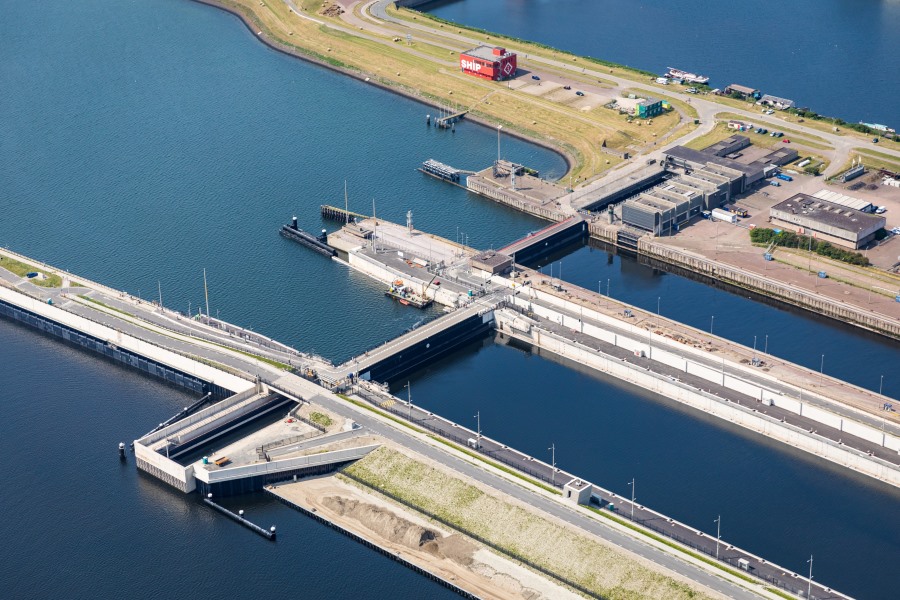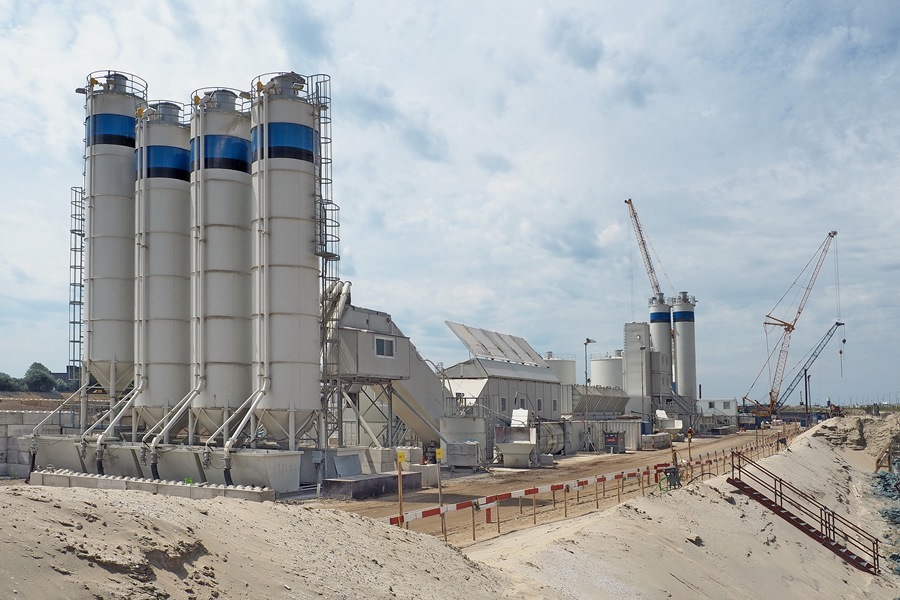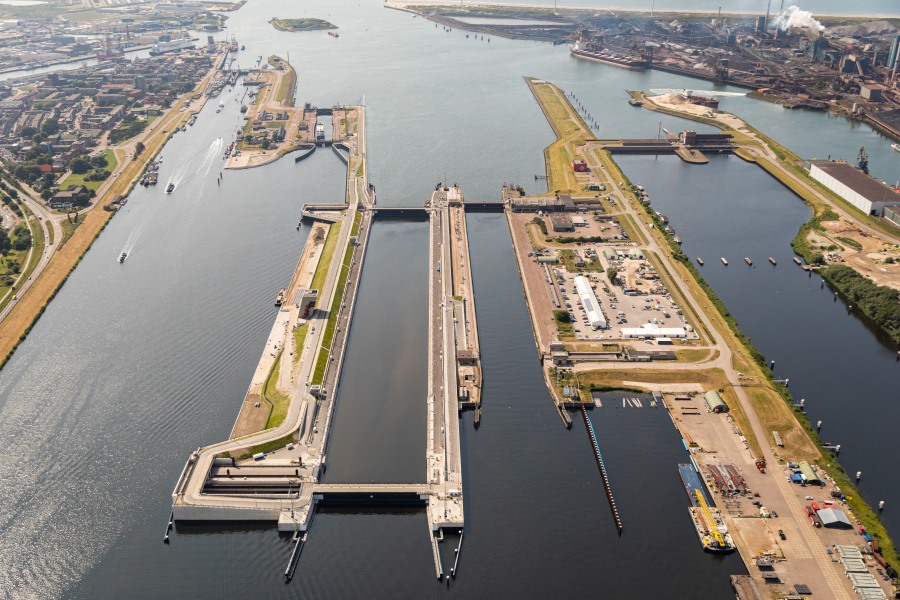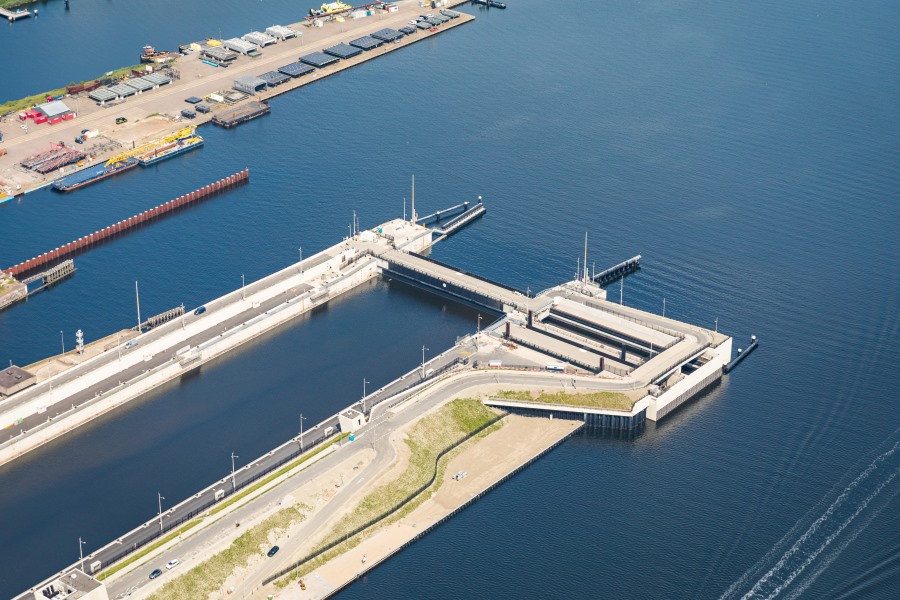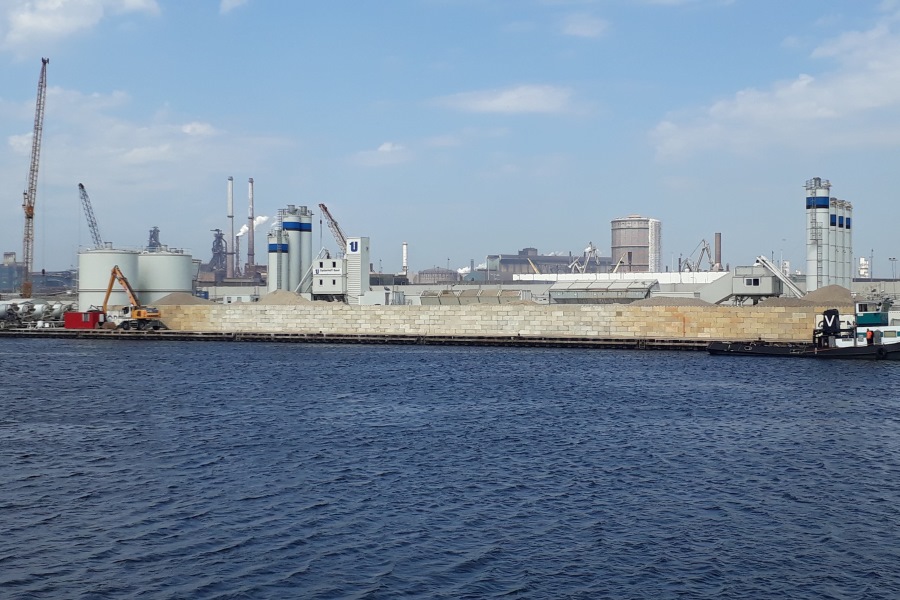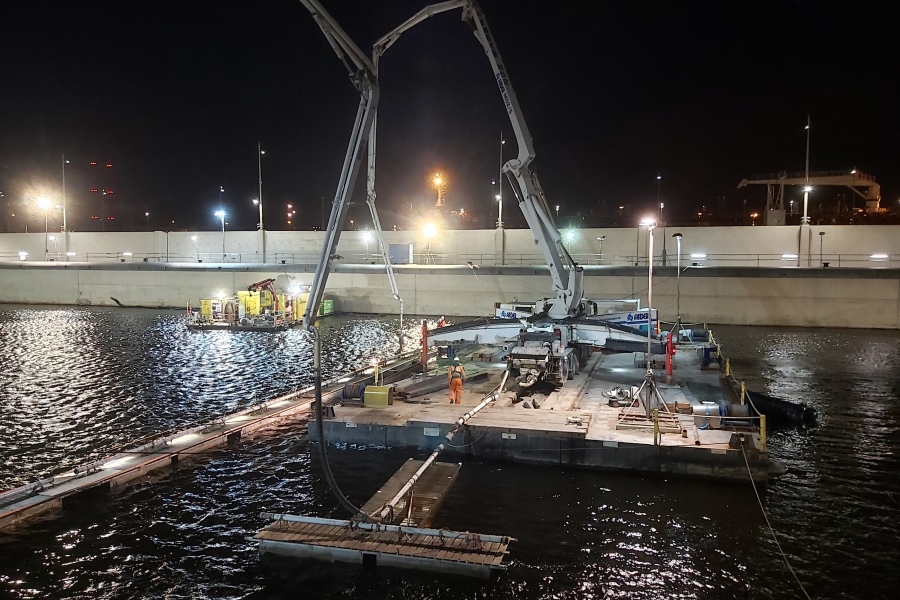The largest sea lock in the world is located at IJmuiden in the Netherlands
The world's largest sea lock - this superlative adorns the new lock built near IJmuiden on the Dutch North Sea coast. The lock will make the port of Amsterdam accessible for future generations of ships. The official opening of the structure is planned for January 2022. Construction work begun in 2016. Commissioned by consortium OpenIJ Dyckerhoff, with its Dutch subsidiary Dyckerhoff Basal, supplied more than 300,000 cbm of ready-mix concrete for the major project - equivalent to 60 soccer fields, each of which would be covered with concrete one meter thick. The concrete was produced in two mobile plants set up directly on the construction site in cooperation with the Mobile Plants branch of Dyckerhoff Beton GmbH & Co. KG. All necessary raw materials for the concrete were delivered by ship or ferry, since no access for heavy goods traffic by truck to the island structure was possible. 95% of the ready-mix concrete was delivered in strength class C30/37 and consistencies F4 or even F5. Concrete was required for various areas of the lock located below the water surface, such as the bottom of the excavation pit of the outer head. This is 4 m thick and - measured at the Amsterdam water level - is sunk about 20 m below sea level. When ships pass through, the concrete floor ensures that not too much sand is stirred up and that no whirlpools are created. The walls of the lock - the diaphragm walls - are also made of concrete. The more than 110,000 T of cement required for concrete production were produced at the Dyckerhoff cement plants in Neuss and Neuwied, which are located directly on the Rhine in Germany, and transported (except for smaller quantities) by barge directly to the mobile ready-mix concrete plants on the construction site. Dyckerhoff AQUADUR Doppel (CEM III/B 42.5 N-LH/SR (na)) came from the Neuss plant, while the Neuwied plant produced Dyckerhoff ECODUR (CEM III/B 42.5 L-LH/SR (na)). Such blast furnace cements contain between 35 and 64% less Portland clinker - this is replaced by granulated blast furnace slag - and thus have a reduced CO2 load. A logistical challenge had to be overcome during the drought in 2018. Due to low water, shipping on the Rhine was severely restricted between July and early December from Neuss and not possible at all from Neuwied. During this time, Dyckerhoff was able to ensure delivery capability by providing replacement transport by truck. The owner of the lock is Rijkswaterstaat, part of the Dutch Ministry of Infrastructure and Water Management. It has awarded the project to the specially founded consortium OpenIJ, consisting of BAM-PGGM, VolkerWessels and DIF. This consortium will also maintain the 500 m long, 70 m wide and 18 m deep lock for at least 26 years after its opening. The small town of IJmuiden, with 30,000 inhabitants, is located near the mouth of the 27-kilometer-long canal that connects Amsterdam with the sea. The town originated more than 140 years ago from a settlement of canal workers. All shipping traffic between the North Sea and the port of Amsterdam passes through the mouth of the canal. Previously, four locks of different sizes, located next to each other on islands, formed the necessary barrier there against the North Sea tides. The new sea lock replaces the former Northern Lock. It will also make the port of Amsterdam accessible to future generations of container and cruise ships. The IJmuiden lock is part of the so-called Trans-European Networks. The Kieldrecht lock, which opened in Antwerp in 2016, is also part of this, and is only slightly smaller. A significant proportion of German imports and exports are handled via the ports in the Netherlands and Belgium. Concrete production started in December 2016 and ended four years later at the end of 2020. Dyckerhoff Basal is the Dutch subsidiary of Dyckerhoff GmbH and one of the largest suppliers of ready-mix concrete in the Netherlands. The aggregates for the concrete production came from Dyckerhoff Basal Toeslagstoffen, a subsidiary of Dyckerhoff Basal. Overall, this project was very successful for Dyckerhoff, not least due to the intensive cooperation between the teams from the Netherlands and Germany. Dyckerhoff Basal Nederland B.V. once again demonstrated its performance strength and, through this project, reputed itself for further large construction sites in the Dutch market. Photo's 1, 3, 4: Topview Luchtfotografie; Photo 2: Koo van Leeuwen, Photo's 5, 6: Dyckerhoff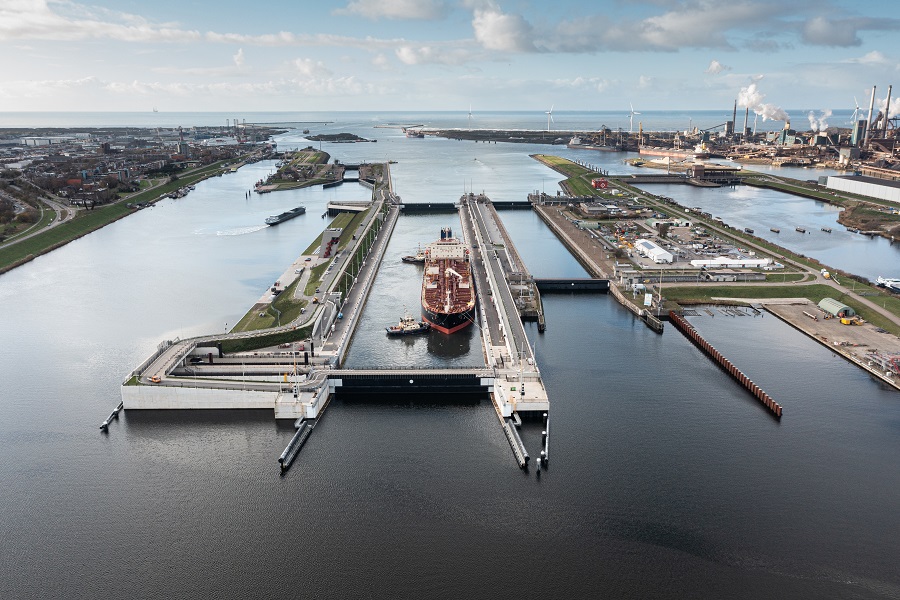
16 November 2021
Dyckerhoff supplied cement and concrete



